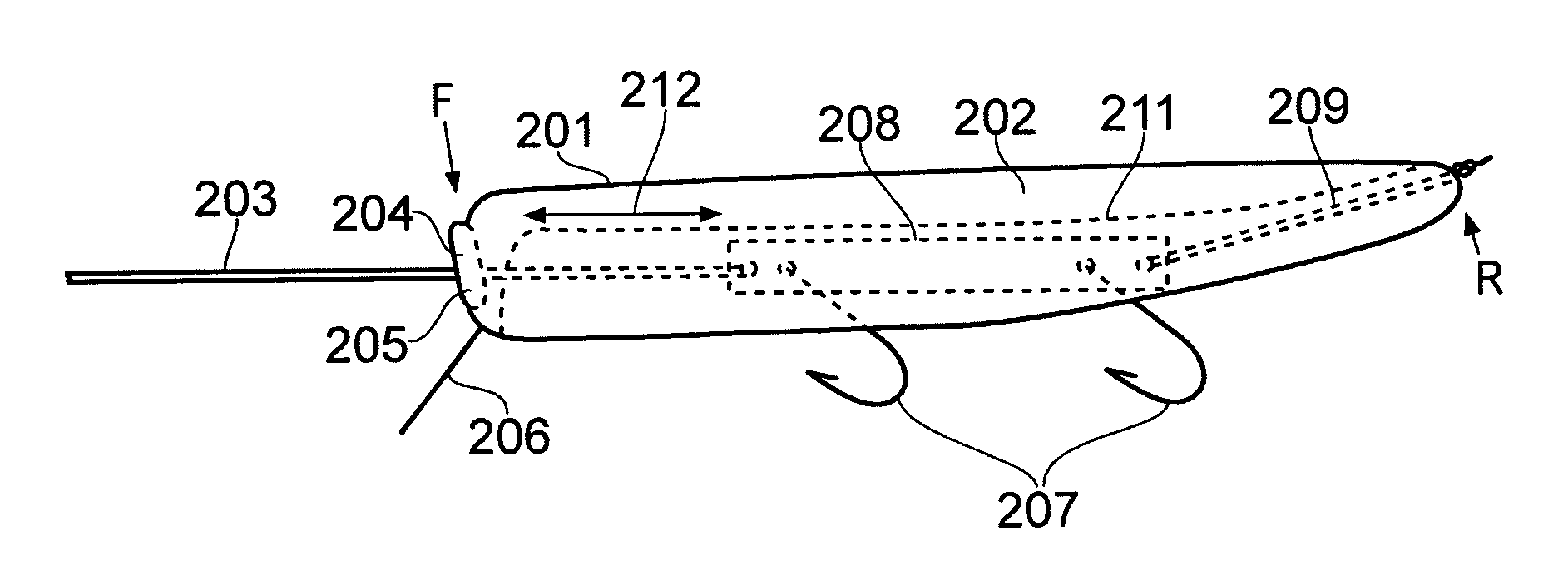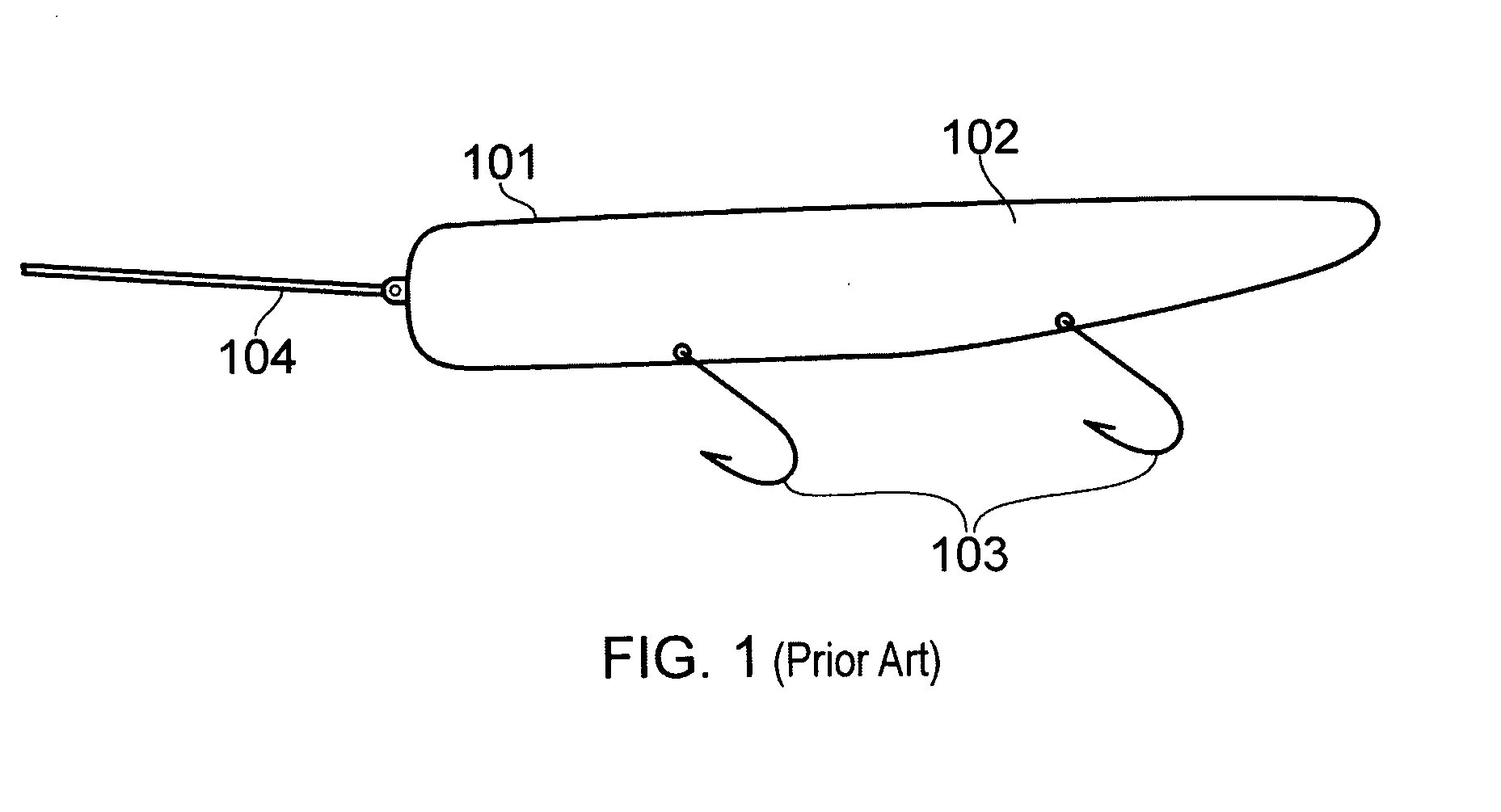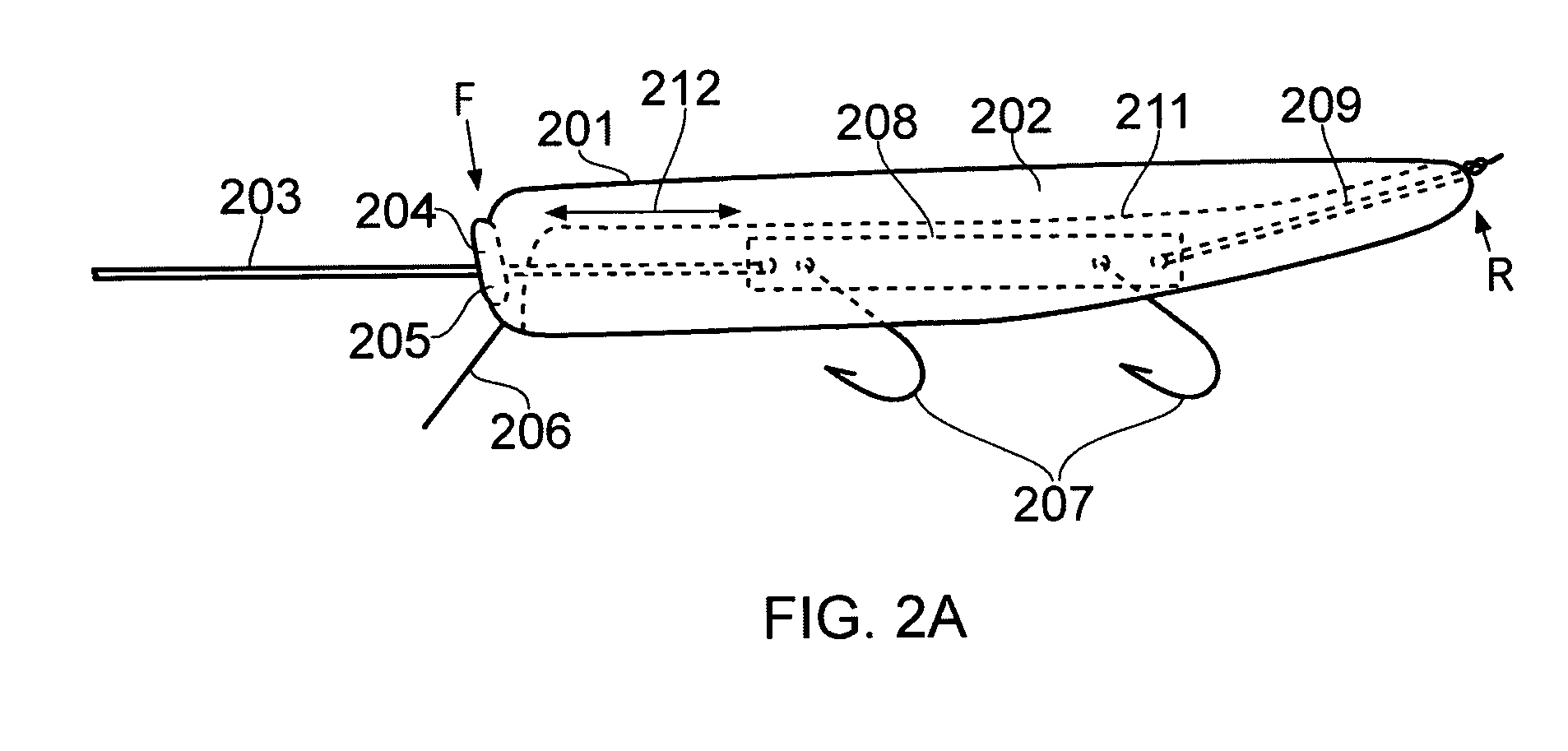Fishing apparatus
a technology of fishing equipment and hooking rods, which is applied in fishing, other angling devices, animal husbandry, etc., can solve the problems of poor hooking ratio and difficulty in removing fish from the lur
- Summary
- Abstract
- Description
- Claims
- Application Information
AI Technical Summary
Benefits of technology
Problems solved by technology
Method used
Image
Examples
first embodiment
[0037]FIG. 2A shows a fishing apparatus 201 according to the invention. The fishing apparatus 201 comprises a lure body 202 having a forward end (generally indicated at F to the left in FIG. 2A) and a backward end (generally indicated at R in FIG. 2A). The lure body 202 in this example is made from wood and is painted as desired to attract fish, e.g. in a similar manner to how conventional lure might be painted. Other lure body materials could be used, e.g., plastics or metals. The lure body 202 may be weighted so that it sinks to a desired depth, or may be buoyant so that it floats. The overall characteristic lure body size and shape may generally accord with those of conventional lures (i.e. will be selected primarily according to what is considered most likely to attract fishes sought). The example lure body in FIG. 2A is generally elongate having an overall rounded square outer profile, and has a length of around 10 cm and a characteristic width of around 2.5 cm. Other shapes ma...
second embodiment
[0053]FIG. 3A shows a fishing apparatus 301 according to the invention. This embodiment differs from the embodiment shown in FIGS. 2A to 2D primarily by using a different retaining device / biasing mechanism. Whereas the example in FIGS. 2A to 2D employs an elastic string, the embodiment shown in FIG. 3A uses a spring. What is more, the spring in FIG. 3A is arranged to operate in compression (rather than extension) when the hooks move forward. Many aspects of the fishing apparatus 301 shown in FIGS. 3A and 3B are similar to and will be understood from the above description of the fishing apparatus 201 shown in FIGS. 2A to 2D.
[0054]Thus the fishing apparatus 301 comprises a lure body 302, having a forward and backward end. The forward end of the lure body comprises an aperture 307 arranged to accommodate a friction fit plug 305. The friction fit plug 305 is inserted into the aperture 307 but may be readily removed if desired, as described further below. The friction fit plug 305 furthe...
PUM
 Login to View More
Login to View More Abstract
Description
Claims
Application Information
 Login to View More
Login to View More - R&D
- Intellectual Property
- Life Sciences
- Materials
- Tech Scout
- Unparalleled Data Quality
- Higher Quality Content
- 60% Fewer Hallucinations
Browse by: Latest US Patents, China's latest patents, Technical Efficacy Thesaurus, Application Domain, Technology Topic, Popular Technical Reports.
© 2025 PatSnap. All rights reserved.Legal|Privacy policy|Modern Slavery Act Transparency Statement|Sitemap|About US| Contact US: help@patsnap.com



